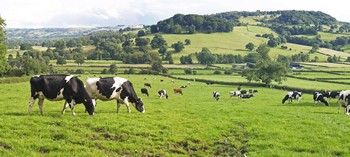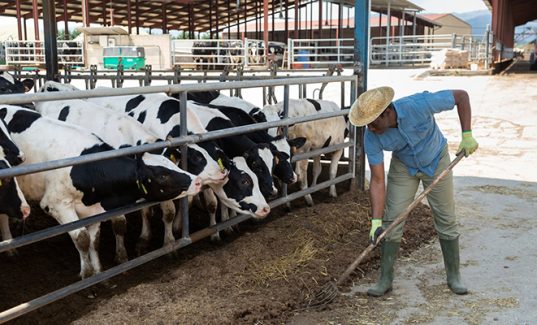Urine sensors are being connected to the rear of dairy cows in a world first environmental project by scientists to work out how much nitrogen is being excreted by them.
AgResearch scientists expect the project will provide insights into the best way to prevent nitrates from escaping into water from farm paddocks.
 Measurements are taken every time a cow urinates via the sensors to gauge how much and how often urine is passed. The concentration of nitrogen is also measured in urine that can leach into soil and waterways and cause damage such as algal blooms.
Measurements are taken every time a cow urinates via the sensors to gauge how much and how often urine is passed. The concentration of nitrogen is also measured in urine that can leach into soil and waterways and cause damage such as algal blooms.
AgResearch senior scientist Dr Brendon Welten said the sensors would provide a greater understanding of the behaviour of cows, which could help develop techniques to reduce nitrogen leaching from farms.
“Other sensors exist around the world to provide data from livestock, but these sensors we’ve developed are unique in their ability to record nitrogen concentrations each time the cow urinates during grazing,” said Welten. “We can learn, for example, how different species of pasture affect the amount of nitrogen excreted in urine.”
Lake and river pollution was found in a Colmar Brunton poll to be one of the top two concerns for New Zealanders.
AgResearch scientists have been working on the sensors since 2010.
They weigh about 1.5 kilograms and are attached to a cow by a harness connected to a lightweight cow cover. Sensors record data through temperature, pressure and refractive index instruments and once stored it can be remotely accessed by a wireless network system.
The sensors have already been used in the United Kingdom and Australia.
“The operation of the sensors is complex, and at this stage we are working towards offering the sensors to other researchers around the world to allow them to use the technology to make similar gains,” Dr Welten said.
“AgResearch will have the expertise to support those researchers to use the technology and maximise the benefits from it.”
The sensors have played a part in valuable progress made in the Forages for Reduced Nitrate Leaching (FRNL) programme, involving DairyNZ, AgResearch, Plant & Food Research, Lincoln University, the Foundation for Arable Research and Landcare Research.
DairyNZ senior scientist Ina Pinxterhuis said the programme’s results confirmed variations appeared in the excretion of urinary nitrogen over a day, making it necessary to have repeated measurements.
“It is also great to see that the options we examine to reduce nitrate leaching do result in lower daily urinary nitrogen excretion and lower nitrogen concentration – if not during the whole 24 hours of the day, at least for some parts. This information provides new options for management too.”
Source: NZFarmer.co.nz




